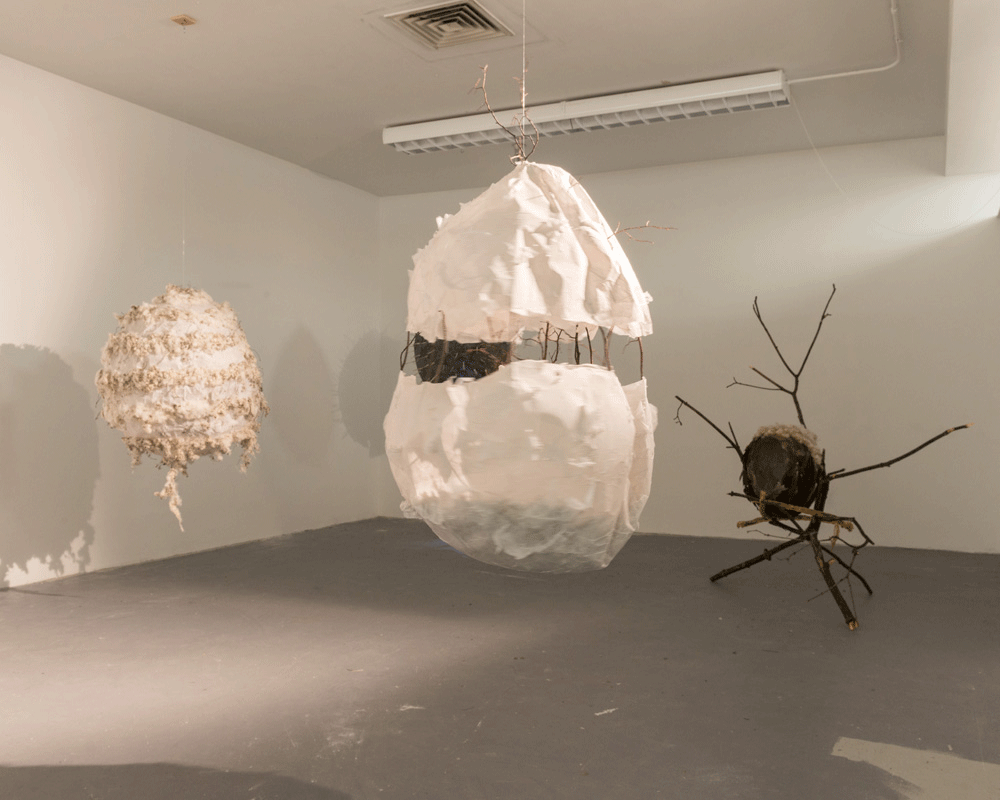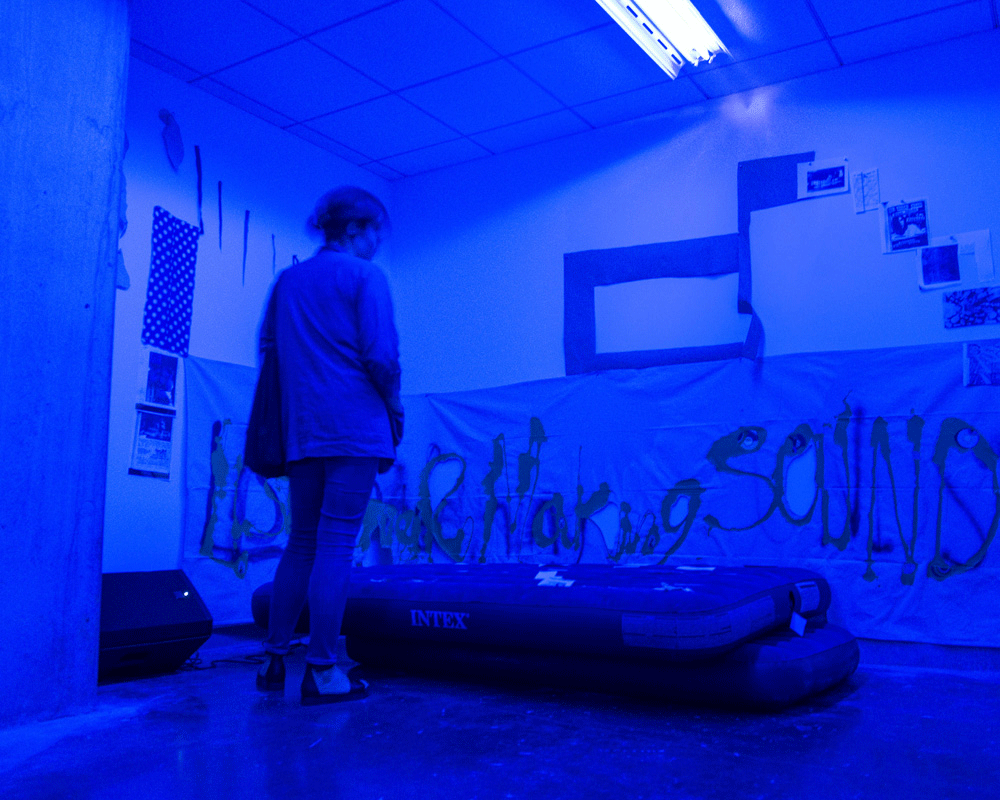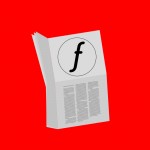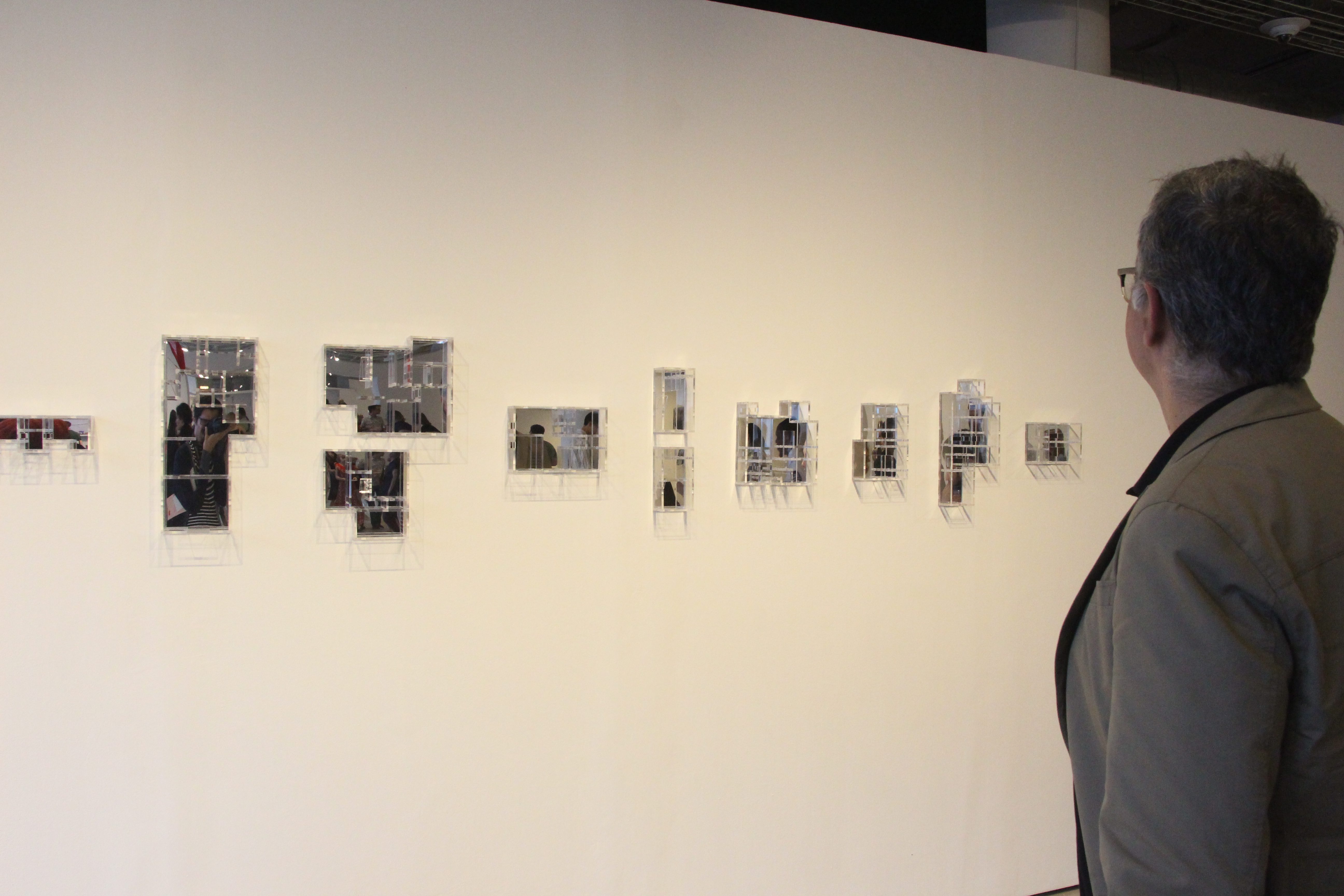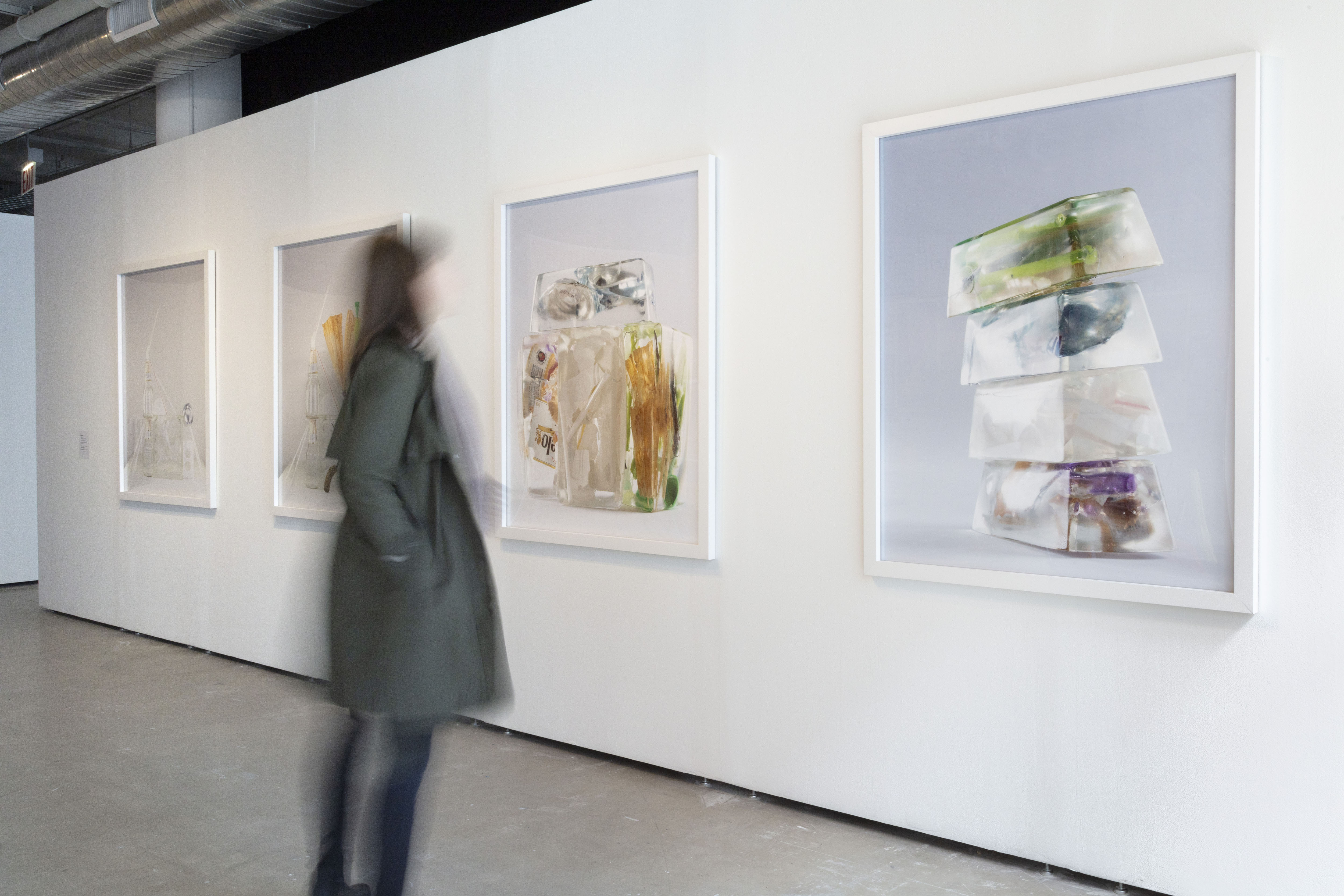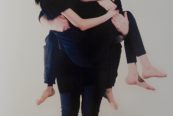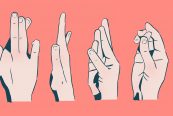Artwork by Claire Pope photographed by Yubo Dong
The second year of the School of the Art Institute of Chicago’s (SAIC) three-year Low-Residency Master of Fine Arts program came to a close last Friday. The Open Studio Night acted as a culmination of the students’ three weeks of on-campus studio work. The event took viewers through a majority of the School of the Art Institute of Chicago’s buildings. As the audience moved from building to building in order to view the studios, they were greeted by performances, readings, and refreshments.
In the Sullivan Building at 33 South State Street, the school’s center of design, a surprisingly wide range of studio practices were on display. On the building’s third floor, viewers were greeted with professionalism embodied by signs, maps, and security guards. This staid air quickly dissipated throughout the night as the need to celebrate a rigorous summer took hold of the students.
Passing the cocktail bar, the audience continued through the floor into the Low-Residency MFA studios scattered among those of full-time graduate students, turning the event quickly into a sort of intriguing treasure hunt. With the lack of geographic organization, Nyugen Smith’s studio quickly became a centerpoint of interest. Smith expanded upon established open studio events, where artists show work, often work that is in-progress, by using his studio space as an opportunity for installation.
Artwork by Nyugen Smith photographed by Yubo Dong
In the center of Smith’s studio stood a schoolhouse scenario with a physically morphed teacher towering over a pair of students at their desks. The artist’s apparent commentary on the oppressiveness of institutionalized education was enforced and communicated by a wide range of media including a video of what appears to be Smith’s hands being hit by a ruler each time they approach a book. Smith evidently understood and developed his work in the Low-Residency program with SAIC’s focus on interdisciplinary art in mind.
The second section of the event required much more cardio, with open studios on the twelfth, fifteenth, and sixteenth floors of the MacLean Building at 112 South Michigan Avenue as well as on the eleventh floor of the 116 South Michigan Avenue building. The energy of the event quickly spiked as traveling became chaotic. Maps became less descriptive, and audience members frequently ended up not finding the studios they intended to.
The Low-Residency studios fluctuated between mimicking a gallery setting by displaying a couple of finished pieces and embracing the stereotypical artist’s studio aesthetic defined by visual overload, which Arielle Tonkin seemed to embrace.
With paint on the walls and doodled papers strewn on the floor, Tonkin displayed her artistic approach as well as her practice as an artist. Projected on a wall covered in paint and drawings was a video of the artist outside of the Art Institute of Chicago. As an exploration of consent, surveillance, and human interaction, she invited tourists and other onlookers to paint over her plein air painting of the lions in front of the famous museum. Capturing these interactions and displaying the final painting showed Tonkin’s ability to create a finished piece of conceptual art, which here was accompanied by fiber samples and drawings that also displayed her process and experimentations.
Finally, the audience was brought to the second floor of the Sharp Building at 36 South Wabash Avenue. With only a couple of studios left to see and the refreshments nearly gone, things seemed to be coming to a close. Then curator and artist Gabriel Rivera chose to close the night differently.
mo(u)rning arkadia Photo Courtesy of Yubo Dong
As the programming fellow for the Low-Residency program, Rivera was able to take over several studios to curate mo(u)rning arkadia. In collaboration with Stephen Flemister, Julian Gatto, Jamil Kosoko, Guadalupe Rosales, Sandrine Schaeffer, Kate Watson-Wallace, and Molly Zuckerman-Hartung, he created a format meant to relax the formal gaze. With Rivera acting as a doorman, the audience entered the space to blue lighting and the sound of pounding club music. Inspired by bathhouses and aliens, each installation pulled the viewer into a strange new environment where they could choose to be an onlooker or a participant. With rooms turned into dance floors and massage parlors, the exhibition creates an informal happening in an institutional context.
The Low-Residency MFA Open Studios Night seemed to provide a much needed summer celebration for artists in the program and an important exhibition that exposed the work of students in a still very new program to the public.

